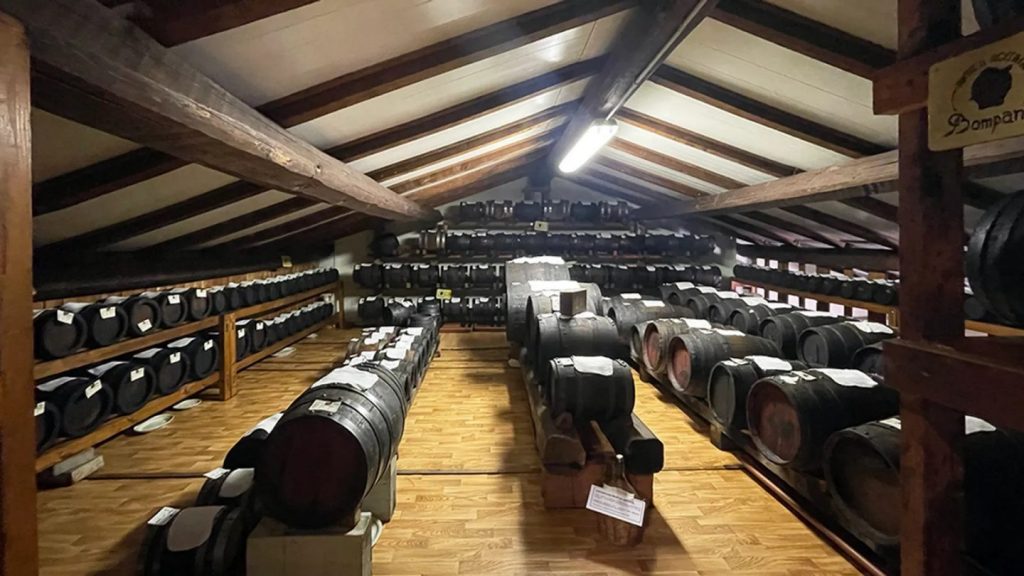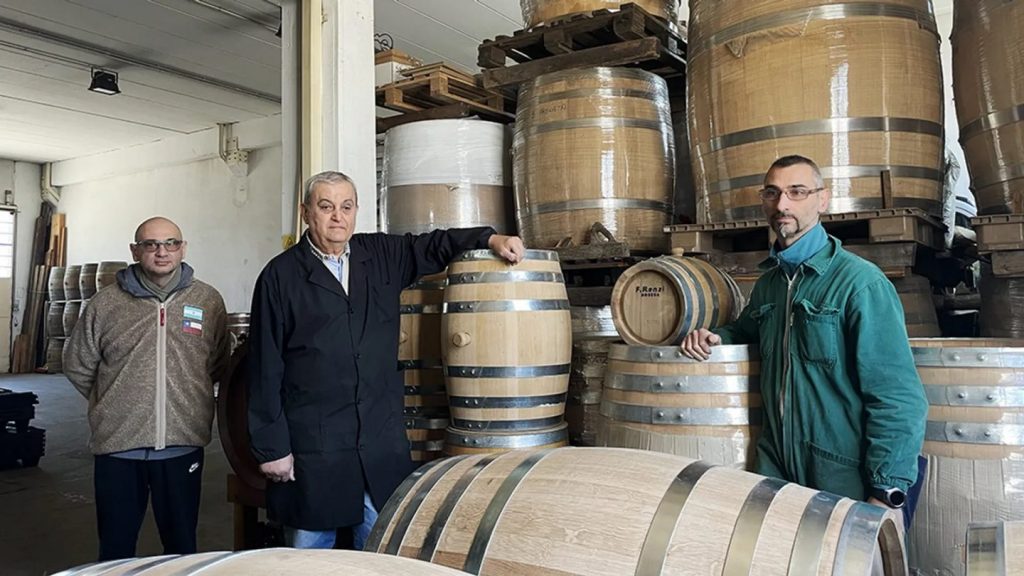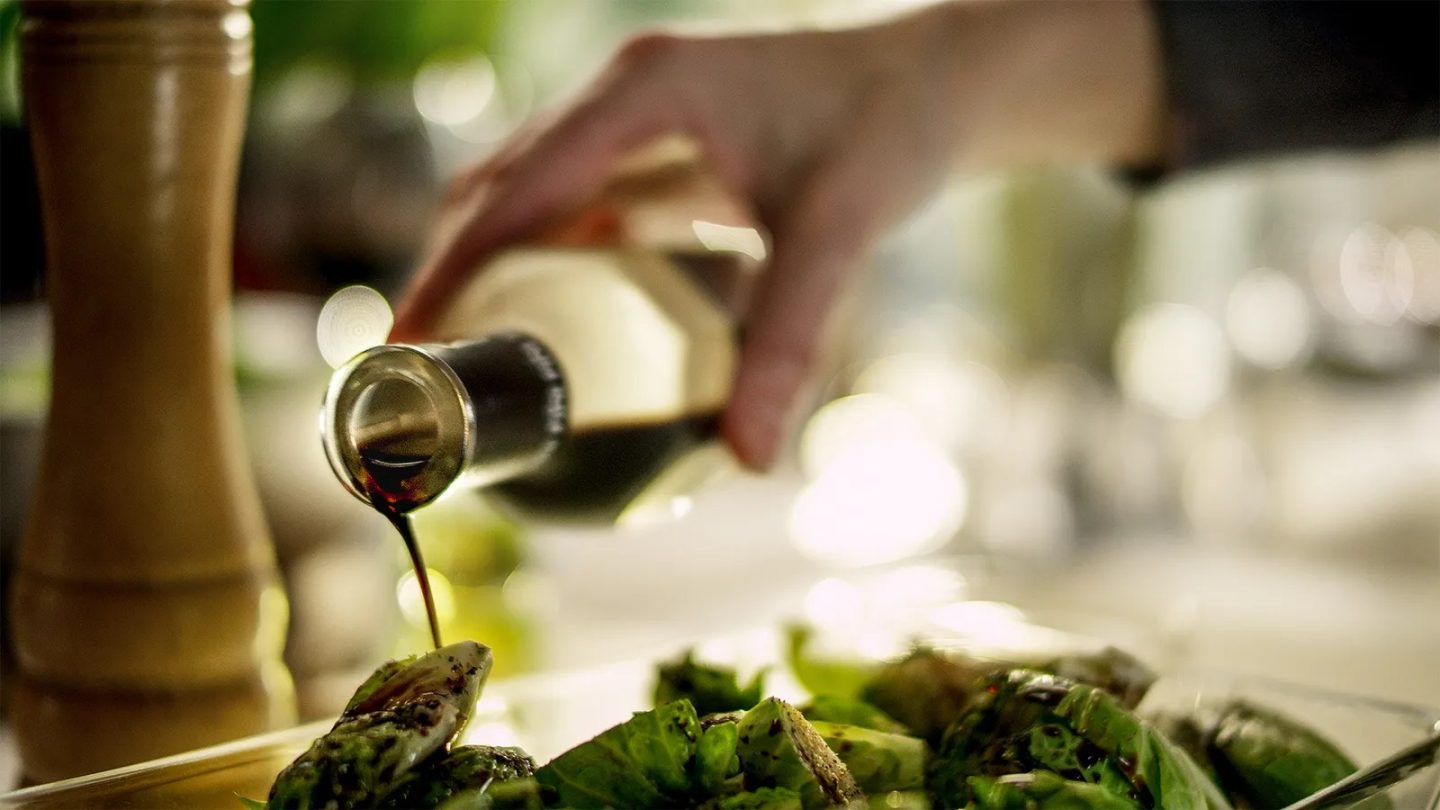From a complement to fries to a hint of acid on upscale dishes, balsamic vinegar is one of the world’s most recognisable condiments. And yet, many have never tasted the real thing.
BBC – From an accompaniment to French fries at the local burger joint to hint of acid added to Michelin-starred dishes, balsamic vinegar is one of the most recognisable condiments on the global table. And yet, many have never tasted the real “black gold” of Modena, Italy. It takes 12 years to make the best, aceto balsamico tradizionale (traditional balsamic vinegar), and at least 25 to make the finest, extra Vecchio.
Because of traditional balsamic vinegar’s painstaking artisanal production process, supplies are limited, and it tends to be rather pricey. And so, as the global demand for it has risen since the early 1980s, a market for imitation balsamic vinegar and cheaper products has exploded. In one instance in March 2019, a dramatic Interpol operation in northern Italy seized 9,000 tonnes of crushed grapes intended to be made into fake balsamic vinegar.
Traditional balsamic vinegar from the two provinces of Modena and Reggio Emilia in the Emilia-Romagna region of northern Italy is made from grape varieties grown in the mildly calcareous soil of the provinces. “To produce it, mosto cotto (cooked must, or crushed grape juice including the skin, stem and seeds) is progressively aged for decades in sets of aromatic wooden barrels known as a batteria (battery),” said Lara Vecchi, a fifth-generation traditional balsamic vinegar maker at Acetaia Bompana in Modena. This slow process takes place in an acetaia, a dimly lit attic, where its cold in the winter and warm in the summer, and this change of temperature is key to a fragrant, dark and thick liquid with the perfect balance of sweet and tangy flavours.

In 1860, Francesco Agazzotti, a Modenese nobleman and balsamic aficionado, wrote a detailed account of the production of traditional balsamic vinegar in Modena in a letter to his friend Pio Fabriani. This document is the basis of the method used today for production of the Protected Designation of Origin (DOP) product, emblematic of Italy’s artisanal gastronomy. Every aspect of traditional balsamic making must adhere to this, so producers can use the coveted certifications.
Traditional balsamic vinegar is so expensive that it is served by the drop. A mere 100ml bottle can be priced starting at €125. The region’s production is limited to only about 8,000 litres annually. Yet, it is hard to comprehend the long-standing tradition and the gastronomic complexity underlying this remarkable product. Confusion thrives in the market due to labelling strategies and ignorant use of terms in mass-market brands, as well as counterfeit and low-grade products.
Traditional balsamic vinegar is so expensive that it is served by the drop.
Balsamic vinegar that is not labelled “tradizionale” (traditional) is a blend of wine vinegar and grape must, made from grapes with no particular provenance and aged in wooden or steel barrels for just a few months.
According to food historian Maureen Fant, “The lesser categories of balsamic vinegar can be used in cooking, but people should learn to read labels. The tradizionale has one ingredient – simply mosto cotto, while all the other kinds are either a mix of vinegar and mosto, down to the ones that are just made with vinegar, coloured and flavoured for an air of verisimilitude.”
The region of Emilia-Romagna is dotted with many producers of traditional balsamic vinegar, most of which are small family-run acetaias. I spent time at Vecchi’s family acetaia to learn how traditional balsamic vinegar is aged in a succession of large to small special wood barrels.
The region of Emilia-Romagna is dotted with many producers of traditional balsamic vinegar, most of which are small family-run acetaias.
In late autumn, bunches of ripe Trebbiano grapes are harvested from the Vecchi family’s farmlands and brought to the acetaia to be cleaned, juiced and cooked down to a dark, luscious, velvety liquid. When the cooked grape juice is poured into the barrels, wild yeasts looming in the air spontaneously start fermentation, making it very mildly alcoholic. Both wild and introduced acetobacter, a genus of acetic acid bacteria, colonises the barrels and slowly transforms the juice into a syrup with a lively tanginess and a fresh, fruity base note, reminiscent of the grape and a hint of wood.

Transformation happens through all four seasons, making tending to the balsamic barrels a continuous task. Makers use sensorial cues like smell and taste to slowly encourage acetobacterial strains that can survive the high sugar concentrations in the barrels and high temperature variances typical of attics. When I visited in early spring, Vecchi and her family were performing an annual refilling of the barrels with balsamic from other barrels. This is because the acetaia suffers from the previous summer’s heat, which draws out moisture from the full barrels, causing 20% of the balsamic fermenting inside to evaporate.


